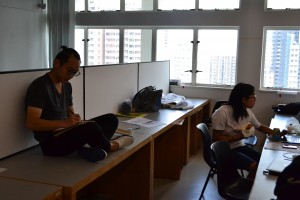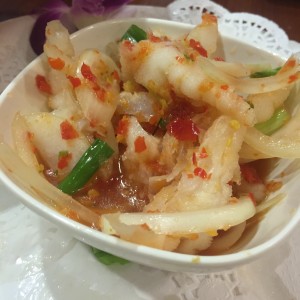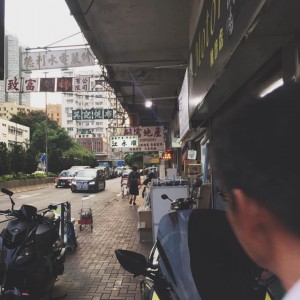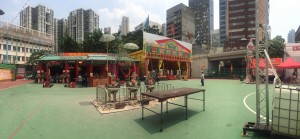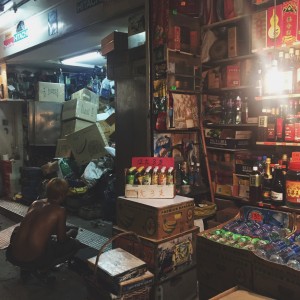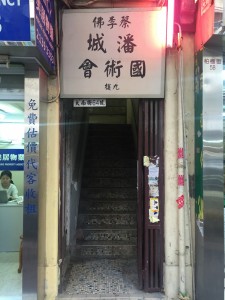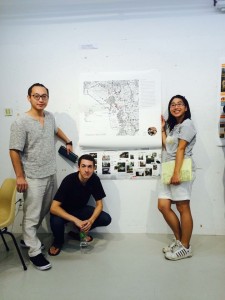I just want to start off this final blog post by saying that I truly had an amazing few weeks in Hong Kong. It was an experience that I’ll never forget, with people who I’ll hopefully stay connected with for a long time. Traveling to Asia was something that I always knew I had to do, and while this was just a little taste of the culture the region has to offer, I’m so glad that I got the chance to experience Hong Kong with the group we had. I’ll talk about them and my out of program fun later, but I just want to note that those experiences were a big part of my positive takeaway from this trip
Jumping right into the challenges I faced in this program, many of the issues that I encountered were rather minor and many challenges I explain err on the side of silliness. In all seriousness however, the coursework was definitely a challenge at times for a number of reasons. The language barrier between the three of us group mates was something that we worked on throughout the two-week program, and while it was difficult to communicate on some issues, we all grew better at expressing our ideas to each other in the end. Even though communication was something that we never perfected, it helped that we all remained patient with one another and that my teammates were a couple of great people to boot. 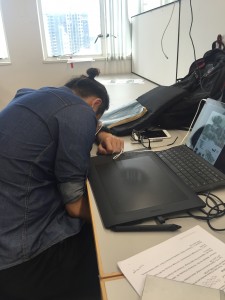 For the actual project work itself, it was quite time consuming. On some days we stayed on or near campus from the morning until deep into the night. For me, I’ve never experienced a studio class, so the long hours spent on campus we fairly unusual to me, but honestly I tried to enjoy it. There’s a definite sense of community when you spend that much time around the people you work with, and even though these may have just been some high caliber individuals, the time spent working on our projects felt a significant bit less strenuous with those classmates around. Another in-class challenge was probably the presentation for me. We really banked on the longer 10 to 15-minute time limit for the explanation and theatrics of our board. When we wer
For the actual project work itself, it was quite time consuming. On some days we stayed on or near campus from the morning until deep into the night. For me, I’ve never experienced a studio class, so the long hours spent on campus we fairly unusual to me, but honestly I tried to enjoy it. There’s a definite sense of community when you spend that much time around the people you work with, and even though these may have just been some high caliber individuals, the time spent working on our projects felt a significant bit less strenuous with those classmates around. Another in-class challenge was probably the presentation for me. We really banked on the longer 10 to 15-minute time limit for the explanation and theatrics of our board. When we wer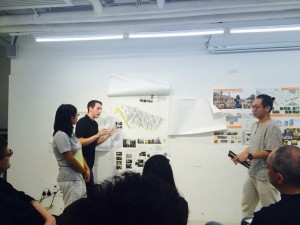 e told that we would only had five minutes to present, my mind went into overdrive and focused more on whether or not we could pull off our fun and unique design. We got through the presentation and unveiled our layered board relatively smoothly, unfortunately leaving many topics out, but even if the instructors did this on purpose we probably would have changed the approach to the whole presentation a little earlier if we had known the actual time limit. Alas we got the presentation done and the board was received as well as we could have hoped, so it wasn’t too big of an issue.
e told that we would only had five minutes to present, my mind went into overdrive and focused more on whether or not we could pull off our fun and unique design. We got through the presentation and unveiled our layered board relatively smoothly, unfortunately leaving many topics out, but even if the instructors did this on purpose we probably would have changed the approach to the whole presentation a little earlier if we had known the actual time limit. Alas we got the presentation done and the board was received as well as we could have hoped, so it wasn’t too big of an issue.
During the rest of our travels an obvious problem that anyone who has been to Hong Kong in the summer must face, is of course, the heat. 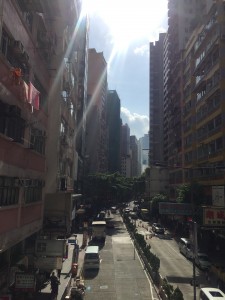 With endless air conditioned buildings, finding a cool spot was never too far off, but the constant swings in temperature from hot and humid to cold and air conditioned was confusing to the body. The hottest times were during our tour t
With endless air conditioned buildings, finding a cool spot was never too far off, but the constant swings in temperature from hot and humid to cold and air conditioned was confusing to the body. The hottest times were during our tour t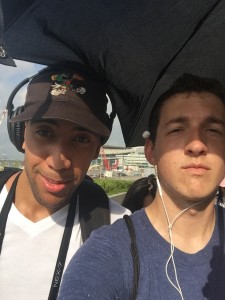 he first week and the time my group spent making our video on the baking streets of Tai Kok Tsui. We stood in the middle of intersections in the filtered, yet searing sun and had little shade relief on the treeless roadways. So we acted like filthy tourists at times and created our own shade with umbrellas that got more use in the sun than the rain. Honestly though, now that I’m back in Oregon I miss the humidity a little.
he first week and the time my group spent making our video on the baking streets of Tai Kok Tsui. We stood in the middle of intersections in the filtered, yet searing sun and had little shade relief on the treeless roadways. So we acted like filthy tourists at times and created our own shade with umbrellas that got more use in the sun than the rain. Honestly though, now that I’m back in Oregon I miss the humidity a little.
The food challenges were few and far between as nothing that people typically eat in Hong Kong is really that strange. The one thing that I ate which proved a challenge was the chicken feet in Aberdeen. It really wasn’t that much of a struggle, but I messed up and instead of sucking the flav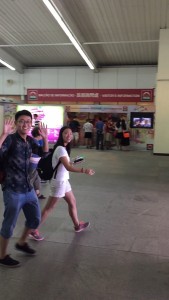 or off the foot, I took a bite. Bad idea. I was left with a mess of bones and cartilage in my mouth that I was never destined to swallow, and while it had a nice, spicy flavor, I didn’t go back for seconds. On our trip to Macau, as a group we had the challenge of getting a Chinese national into an SAR of the People’s Republic. The image to the left was captured as our friend was finally freed from his detention upon entrance into Macau. #FreeWei2015.
or off the foot, I took a bite. Bad idea. I was left with a mess of bones and cartilage in my mouth that I was never destined to swallow, and while it had a nice, spicy flavor, I didn’t go back for seconds. On our trip to Macau, as a group we had the challenge of getting a Chinese national into an SAR of the People’s Republic. The image to the left was captured as our friend was finally freed from his detention upon entrance into Macau. #FreeWei2015.
I’d say the biggest challenge for me however, was leaving. . This was both a challenge and a time for me to reflect on how the experience in Hong Kong would impact my future educational and professional plans. Th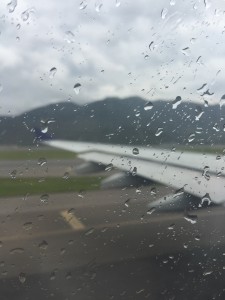 e credits from this course are the very last ones I need to graduate with an undergraduate degree in Environmental Science, and coming back home means stepping into a time where I’m generally expected to make certain life decisions. Further schooling is something that I always considered could be in my future, only if I had a good reason to do so. I was on the fence as to whether or not a graduate degree was something that I wanted or found valuable, but now that I’ve had a little exposure to the world of landscape architecture here and in Oregon, I know that entering an MLA program would benefit my career goals. In conversations I’ve had with other UO students in the landscape architecture program on this trip and back in Eugene, they have given me confidence that I could succeed in a design setting even coming from a science background. Applied environmental thought gets put into landscape design so frequently that with a degree in environmental science and a minor in planning, I know I have something to offer in future projects while improving my visual presentation skills through various mediums i.e. sketching, layout design, 3D modeling, etc. For now, I’ll do what I can to look good on an application for a master’s program somewhere, but if I found myself back at Oregon in a year, I would be very happy.
e credits from this course are the very last ones I need to graduate with an undergraduate degree in Environmental Science, and coming back home means stepping into a time where I’m generally expected to make certain life decisions. Further schooling is something that I always considered could be in my future, only if I had a good reason to do so. I was on the fence as to whether or not a graduate degree was something that I wanted or found valuable, but now that I’ve had a little exposure to the world of landscape architecture here and in Oregon, I know that entering an MLA program would benefit my career goals. In conversations I’ve had with other UO students in the landscape architecture program on this trip and back in Eugene, they have given me confidence that I could succeed in a design setting even coming from a science background. Applied environmental thought gets put into landscape design so frequently that with a degree in environmental science and a minor in planning, I know I have something to offer in future projects while improving my visual presentation skills through various mediums i.e. sketching, layout design, 3D modeling, etc. For now, I’ll do what I can to look good on an application for a master’s program somewhere, but if I found myself back at Oregon in a year, I would be very happy.
I really don’t have any big grievances about the program that was put together for us. Personally I would have wanted another meeting between everyone before we left, but now looking back on how quickly everyone got to know one another and how easy Hong Kong is to navigate, it was never an issue. I only wish the program was longer!
Here’s a video of a guy riding a homemade Segway in Tai Kok Tsui…Have a great day 🙂
Andrew
